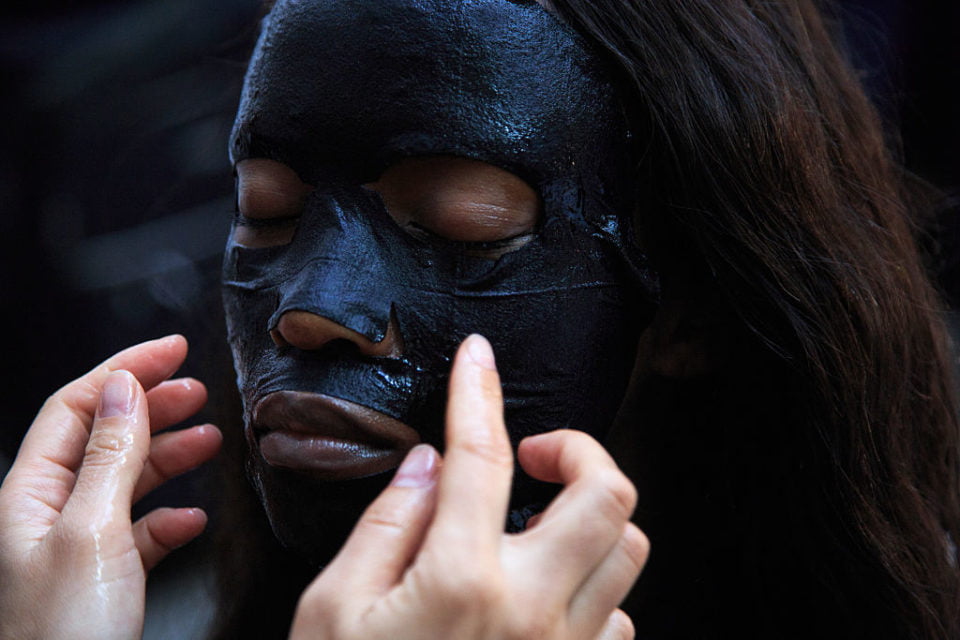
A model gets a Dr. Jart+ skincare treatment at New York Fashion Week (Photo: Getty)
It’s barbecue season, so it’s somehow apt that charcoal is the latest detox darling in the wellness market. The carbon residue is being added to everything from juices to bagels, with promises of cleansing your body and sucking out all those nasty toxins. So no wonder we’re all smearing it on our faces, too.
Activated charcoal is used in medicine for actual detoxing – in cases of poisoning, a large amount of charcoal is fed to patients and the poison adheres to, or is adsorbed by, the charcoal, meaning it can be expelled from the body. Vets even feed it to dogs who have managed to get into the leftover Easter egg stash.
Unlike absorption, which is the entering of one substance by another, adsorption involves the adhesion of one substance to another.
Tackling toxins
Activated charcoal – which has a negatively charged surface – attracts and binds itself to positively charged toxins. The theory is that, in skincare, it does the same thing, sucking all the stuff we don’t want off our face. Aficionados say activated charcoal can adsorb thousands of times its own weight in grime and dirt.
“As airborne pollution particles land on the skin, they actually become lodged within the skin’s deeper structure,” says Sally Penford, director of education at Dermalogica.
“These tiny pollutants oxidise the surrounding squalene and tissue, resulting in free radical damage, structural degradation, unbalanced pigmentation and inflammation.
“As a key ingredient in Dermalogica’s Charcoal Rescue Masque and Daily Superfoliant, activated charcoal is used to powerfully draw out those pollutants, excess sebum, toxins and other impurities from the surface of the skin, allowing them to be rinsed away.”
Burnt offerings?
So should we all be scraping down our barbecues for this wonder ingredient? Not quite.
“While charcoal can come from a variety of sources such as peat, coal, wood, coconut shell or petroleum, Dermalogica charcoal products contain high-quality Binchotan white charcoal,” says Penford.
“This has been made from Japanese ubame oak since the 1600s. It has a variety of uses, from purifying water to deodorising air and whitening teeth. Binchotan charcoal is “activated” by heating Japanese ubame oak branches at extremely high temperatures, then rapidly cooling them down.”
Don’t DIY
Charcoal-based products certainly leave your skin feeling clean and have weirdly been granted starring roles in an increasing number of Instagram selfies. Beware of falling for viral trends though – a spate of YouTube videos showing people mixing charcoal with glue for a very painful peel-off mask have garnered millions of hits. Yeah, it’ll probably clear your pores. And get rid of several layers of that pesky skin into the bargain.
However, people who safely use charcoal-based products (put down that Pritt Stick) say they can shrink pores and minimise breakouts.
Pearly… whites?
Perhaps even more strangely, more people are dipping their toothbrushes in the specialised soot in the pursuit of whiter teeth.
Applying the same principles, charcoal may be effective at removing surface stains such as red wine and coffee, but dentists warn that people should use it sparingly, as it can be abrasive on the tooth’s enamel, and it should be discontinued if you experience any sensitivity.
[“Source-inews”]
